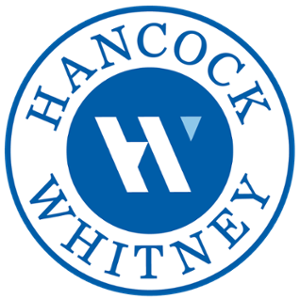Using Home Equity to Manage Financial Challenges
Learn how a Home Equity Line of Credit offers a versatile and affordable solution to tap into your home’s equity, helping you handle unforeseen costs with ease.
3 min read


Jeff LeBlanc
August 21, 2025 |
Unexpected expenses like home repairs or medical emergencies can really strain your budget. A Home Equity Line of Credit (HELOC) offers a flexible and affordable way to access funds by tapping into your home’s value. With interest rates playing a critical role in borrowing decisions, a HELOC can help you tackle financial challenges, whether preparing for or recovering from disasters. Here’s an in-depth look at how a HELOC works, its benefits, and the best ways to use it.

What Is a HELOC?
A Home Equity Line of Credit (HELOC) is a revolving line of credit secured by the equity in your home. Equity is the difference between your home’s market value and your remaining mortgage balance. For example, if your home is worth $400,000 and you owe $200,000, you have $200,000 in equity. A HELOC usually allows you to borrow 80% of that equity, meaning you can access to $160,000–$170,000 for expenses such as disaster recovery, medical bills, or home improvements.
Unlike a traditional loan, a HELOC functions more like a credit card, but it’s secured by your home’s value. You borrow money as needed up to a set credit limit and pay interest only on the amount you take out. The draw period (usually 5–10 years) allows flexible access, followed by a repayment period (traditionally 10–20 years). This affordability, combined with flexibility, makes HELOCs a powerful tool in high-rate environments.
HELOC vs. Home Equity Loan
Choosing between a HELOC and a home equity loan depends on the nature of your financial needs:
- HELOC: Ideal for ongoing or unexpected expenses, such as home repairs after a flood or recurring medical bills. Its variable interest rates offer flexibility but can change with market conditions.
- Home Equity Loan: Great for large, one-time expenses, like a $25,000 roof replacement after a hurricane. It has a fixed interest rate, making your payments easy to plan.
For instance, if you’re working on a home improvement project or planning major repairs, a HELOC can help. You can borrow money for initial costs, like buying materials. Later, draw more funds for additional expenses, such as hiring contractors. You’ll only pay interest on the money you use. A Home Equity Loan is better suited for a single, large expense, such as rebuilding a garage. When interest rates rise, HELOCs tend to be cheaper than credit cards or personal loans. This makes them a good choice for managing disaster-related costs or other financial issues.
Why Use a HELOC?
HELOCs are very versatile. A Federal Reserve report shows that 56% of borrowers use them for home improvements, while another 33% use them for debt consolidation. More borrowers are using HELOCs for disaster recovery as well. They’re especially valuable in disaster-prone areas, where repair costs can escalate quickly. Beyond disasters, HELOCs can fund medical emergencies, college tuition, or high-interest debt consolidation. Interest on HELOC funds used for home-related expenses, like repairs or upgrades, may be tax-deductible. Check with a tax professional for IRS rules. In a high-rate environment, borrowing strategically can save you thousands in interest.
Preparing for Financial Needs
A HELOC can prepare you for disasters or other financial challenges before they happen. It protects your home and finances before trouble strikes. Here are some practical applications:
- Home Upgrades: Installing energy-efficient windows or renovating a kitchen.
- Emergencies: Covering unexpected medical bills or urgent repairs.
- Debt Consolidation: Paying off high-interest credit card debt to save on interest.
With lower interest rates, a HELOC is often more affordable than alternatives. Planning ahead, like getting a HELOC before costs come up, ensures you have money available when you need it. For more financial tips, explore ready.gov’s financial preparedness checklist. It offers steps to safeguard your finances.
Benefits and Risks of a HELOC
Why a HELOC Stands Out
- Flexibility: Only borrow what you need during the draw period. This is great for unexpected disaster costs or projects that happen in phases.
- Affordability: Typically enjoy lower rates than credit cards or personal loans. This saves you money on interest.
- Tax Advantages: You may be able to deduct interest on HELOC funds used for home repairs. Check with a tax professional for IRS rules.
Risks
- Rate Fluctuations: Variable rates may rise, raising borrowing costs over time.
- Home as Collateral: Missed payments can put your home at risk of foreclosure. So, careful financial planning is essential.
- Overspending: Easy access to funds can tempt you to borrow for things you don’t need. This can lead you into debt you don’t want.
To reduce risks, only borrow what you really need, come up with a solid plan to pay it back, and keep an eye on interest rate trends so you’re ready for any cost changes.
How to Get a HELOC
Securing a HELOC generally involves a straightforward process, but planning is crucial:
- Check Eligibility: NerdWallet states that lenders usually require 15–20% home equity. For example, that’s about $50,000 on a $250,000 home. They also look for a debt-to-income ratio under 50% and a credit score of 620 or more. Stable income and a solid payment history also help.
- Use our HELOC Calculator: It helps you estimate how much you can borrow based on your home’s value and equity. Try Hancock Whitney’s HELOC Calculator for a quick assessment.
- Apply Early: Generally, it takes 2 to 6 weeks to get a HELOC approved and receive the funds.
- Talk to a Financial Advisor: A Hancock Whitney professional can tailor a HELOC to fit your financial goals, whether it’s for disaster preparation or other needs.
Be Prepared with a HELOC
A Home Equity Line of Credit (HELOC) is a versatile tool for tackling financial challenges, generally offering flexible access to funds at traditionally competitive rates, even when interest rates are high. Whether you're upgrading your home, managing emergencies, or consolidating high-interest debt, a HELOC may provide the financial flexibility you need. Contact one of our financial centers to get started. By preparing today, you can stay financially secure and ready for any unexpected challenges.
Explore more Insights
Get financial insights delivered to your inbox
Sign up to receive regular updates from our team of experts.









